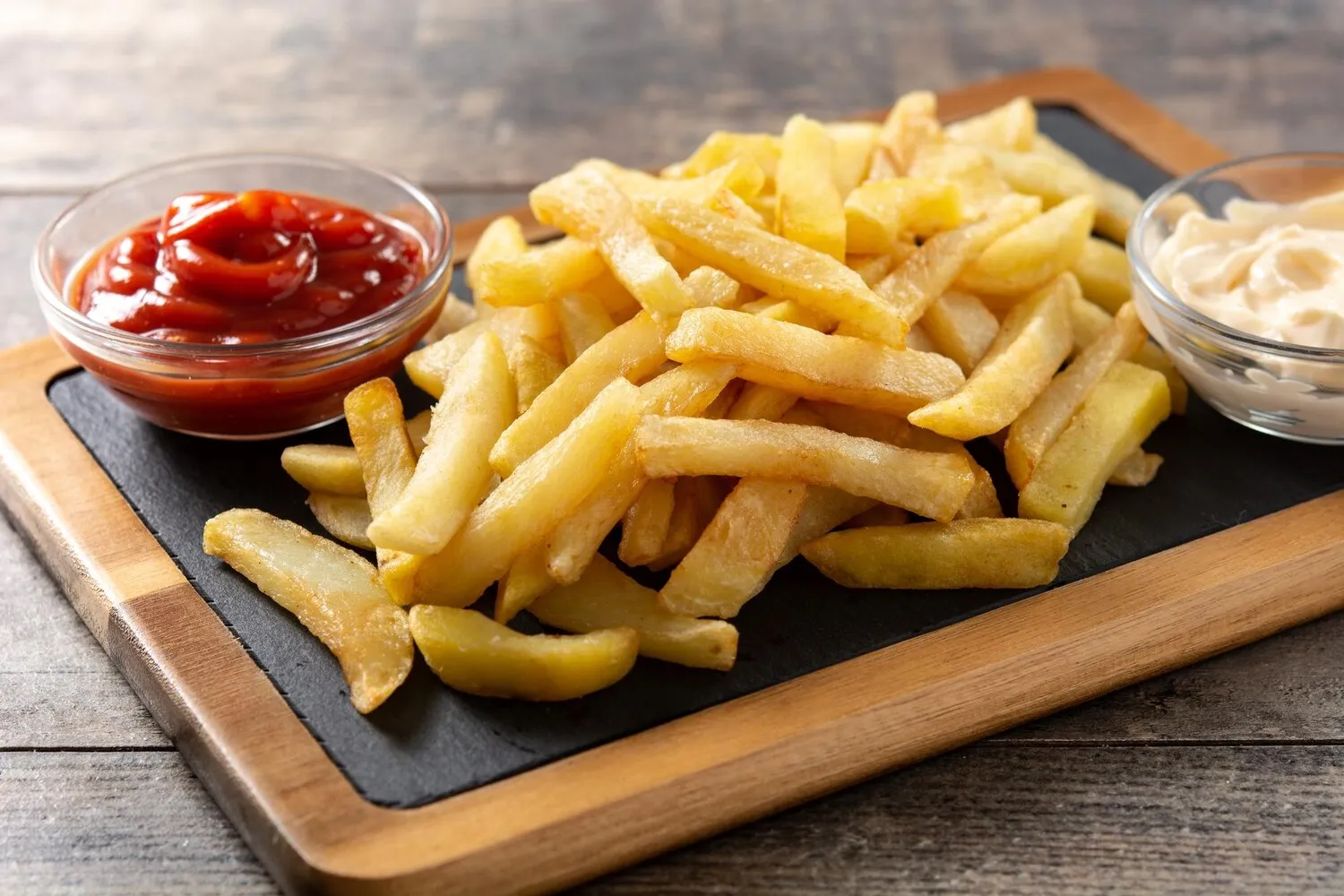
Aipim Frito
Fried cassava, a popular Brazilian side dish or appetizer. Crispy on the outside and soft on the inside.
Nutrition Facts
* The % Daily Value (DV) tells you how much a nutrient in a serving of food contributes to a daily diet. 2,000 calories a day is used for general nutrition advice.
Cassava, also known as yuca or manioc, is native to South America and has been a staple food for indigenous populations for thousands of years. Its cultivation and consumption predate European colonization. Aipim Frito, fried cassava, likely emerged as a practical and delicious way to preserve and enjoy this abundant root vegetable. The simplicity of the preparation suggests a long history rooted in practicality and resourcefulness.
Aipim Frito is deeply embedded in Brazilian culture, representing a connection to the land and a shared culinary heritage. It is a common sight at restaurants, street food stalls, and family gatherings.
Ubiquitous Snack and Side Dish
Aipim Frito is not just a food; it's a social experience. It's commonly enjoyed as a snack with friends while watching a game, as a side dish during churrasco (Brazilian barbecue), or as an appetizer at restaurants before the main course.
Regional Variations
While the basic preparation remains the same, regional variations exist. Some regions may prefer thicker cuts, while others opt for smaller, more manageable pieces. Different types of cassava may also be used, influencing the final texture and flavor.
Symbol of Simplicity and Resourcefulness
The dish reflects the historical reliance on readily available ingredients and the ability to create something delicious from humble beginnings. It's a reminder of Brazil's rich agricultural heritage.
Aipim Frito offers a delightful contrast of textures and a subtly sweet, earthy flavor profile.
The primary flavor is the mild, slightly sweet earthiness of the cassava itself. Frying imparts a crispy exterior that contrasts with the soft, starchy interior. Depending on preparation, a hint of salt enhances the natural flavors. Some variations might include garlic powder or other spices for added complexity. The overall flavor is comforting and satisfying, making it a perfect accompaniment to savory dishes.
Choosing the Right Cassava
Select cassava that is firm, heavy for its size, and free from blemishes or soft spots. The variety of cassava can affect the final result, so experiment to find your favorite.
Proper Pre-cooking
Boiling or steaming the cassava until fork-tender is crucial before frying. Avoid overcooking, as it can become mushy. Drain the cassava thoroughly after cooking to prevent excessive splattering during frying.
High Heat for Crispy Results
Use high heat when frying the cassava. This ensures a crispy exterior and prevents the cassava from absorbing too much oil. However, be careful not to burn it.
Double Frying (Optional)
For extra crispiness, consider double frying the cassava. Fry it once at a lower temperature to cook it through, then fry it again at a higher temperature to achieve a golden-brown and crispy exterior.
Seasoning After Frying
Season the Aipim Frito immediately after frying while it's still hot. This allows the salt and other seasonings to adhere better.
Explore additional Side Dish dishes and restaurants
Explore Side DishDiscover top dining spots and culinary experiences in Blumenau.
Explore BlumenauLearn more about the food culture, restaurant scene, and culinary heritage of Brazil.
Explore Brazil
